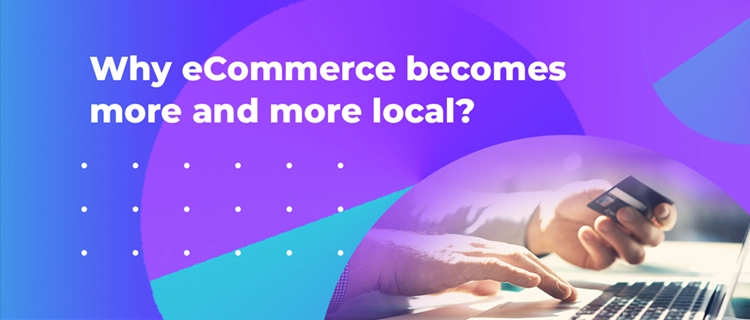
Payments in eCommerce. More than 72% of eCommerce users prefer using websites in their languages. That means website localization plays a significant role in ensuring the best shopping experience and customer satisfaction. Moreover, another study reveals that global markets are becoming more fragmented. In 2010, websites in 14 languages were responsible for 90% of the eCommerce market. While next year, it is expected that a similar market share will be covered by already 16 languages, yet one more until 2027.
74% of consumers worldwide want personalized or customized content while buying in digital stores.
If you’re about to go truly global, you should localize as much as you can. Starting from translating the website, adapting the product descriptions, marketing material, and user manuals to checkout pages and delivery options. Digital store customers prefer to shop using their local currency. They hate additional tax levies and customs duties and would love to see the payment options they’re used to. One of three digital shoppers will abandon their carts if payment does not include their local currency. Offer multiple payment options, and you should see an immediate positive impact on your bottom line.
During the Covid-19 lockdowns, most retail businesses were forced to move online. However, not all of them were ready to seize this opportunity. Some eventually lost their ground. The Internet is international by default; thus, some consumers opt for merchants from abroad. The biggest struggle for many local retailers was falling short of necessary payment methods for markets within other European countries.
Almost 30% of consumers are ready to try alternative payments based on their experiences in 2020. That’s an excellent opportunity for retailers to step forward in providing more digital payment options for their customers.
It matters because 60% of purchasers say they’ll abandon their cart in the last step if they can’t pay using their preferred payment method. So, if you are not offering customers local and ordinary payment methods, you risk losing money.
Even if eCommerce thrives, digital retailers can’t stay still. While localizing the payment offering for each market and offering all essential payment methods is already crucial, most likely, it will become inevitable.
74% of consumers worldwide want personalized or customized content while buying in digital stores. In the US market, personalization became their #1 priority.
European eCommerce landscape changed over the past years. More and more merchants implement innovative and digital options to stay profitable, relevant, and seen. Most of such changes are and will be digital payments and their localization.
Payments in eCommerce. Payment localization often comes by choosing the right service providers, many of which can lift your CX to new heights right away.
For example, one of the most successful European payment unicorns, Mollie, automatically localizes payments. You can pick a locale or let the checkout choose it for you. It’s automatically selecting your local language and setting it as your default. Unsurprisingly, Mollie is expanding fast.
Payment service providers also take care of security, data breaches, GDPR data protection. You can do it yourself by coding backlinks into your checkout page, yet it raises the cost of your eCommerce development because of security needs. The choice is yours, but take note that installing the payment providers module saves not only your resources but many lots of developers’ billable hours.
Skrill Global, a UK-based payment company, offers over 100 local payment methods globally. For a good reason, it’s also one of the leaders providing localized payments to eCommerce in Europe.
PayPal has entered globalization with numerous customized locales of the buyer’s checkout experience. They are in more than 200 countries/regions and support 25 currencies.
Your other options may include Bolt, offering quicker checkout by automatically filling your cart data. Customers don’t need to fill it manually every time they shop online.
Payment localization plays a massive role in eCommerce markets. Although eCommerce is global by nature, consumers are not. Being more local, customized, and personalized will surely increase your conversion rate and ultimately – improve your bottom line.
Would you like to discuss your international business prospects and success? Reach out to professionals. We’re here to help.